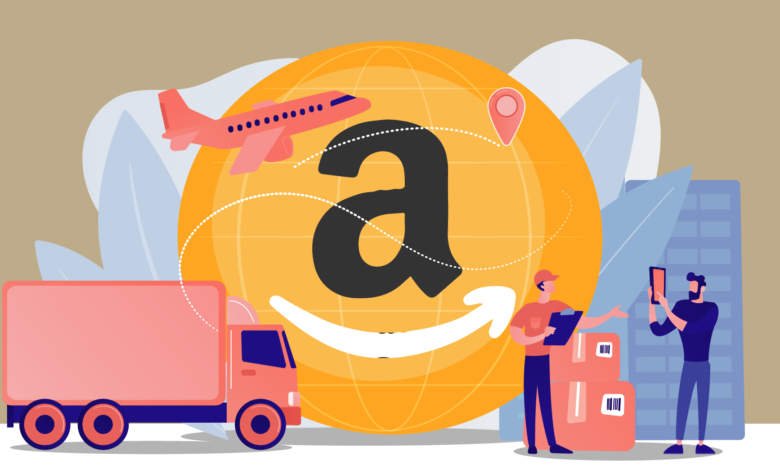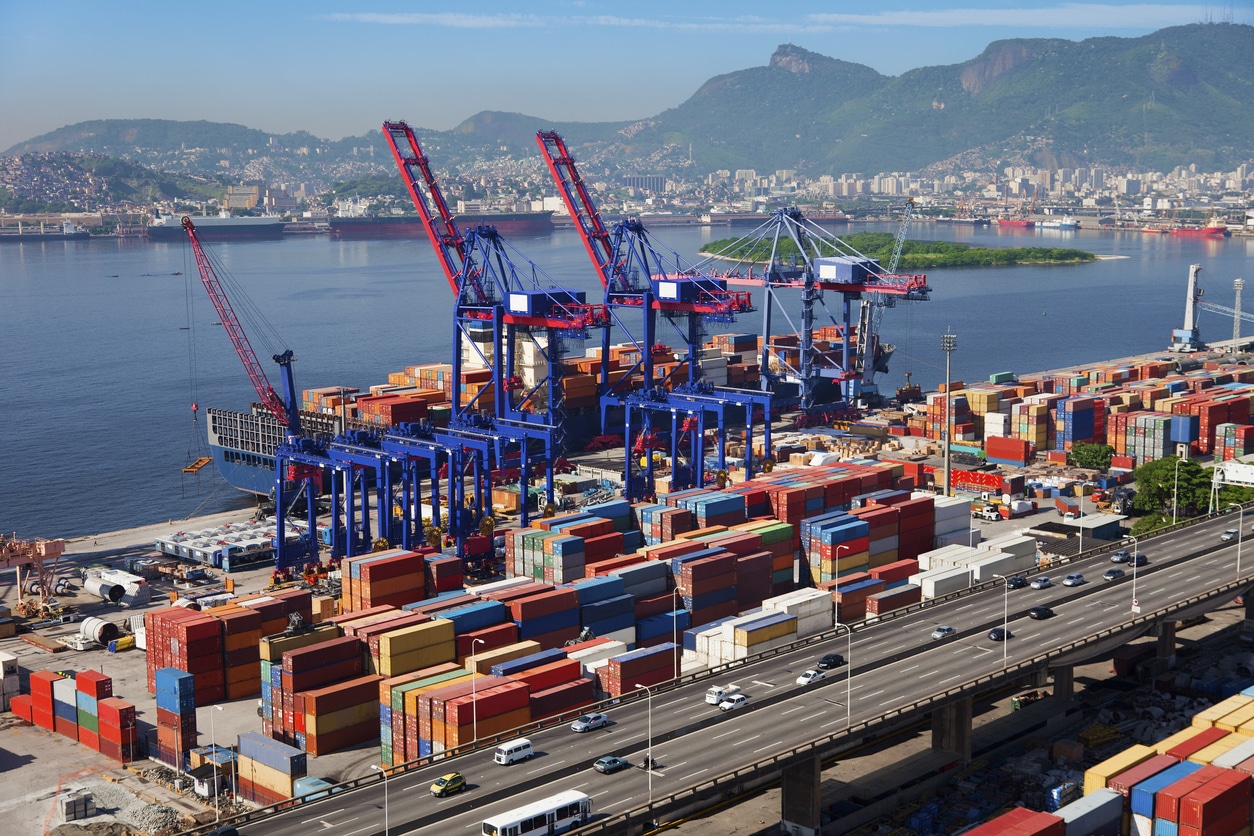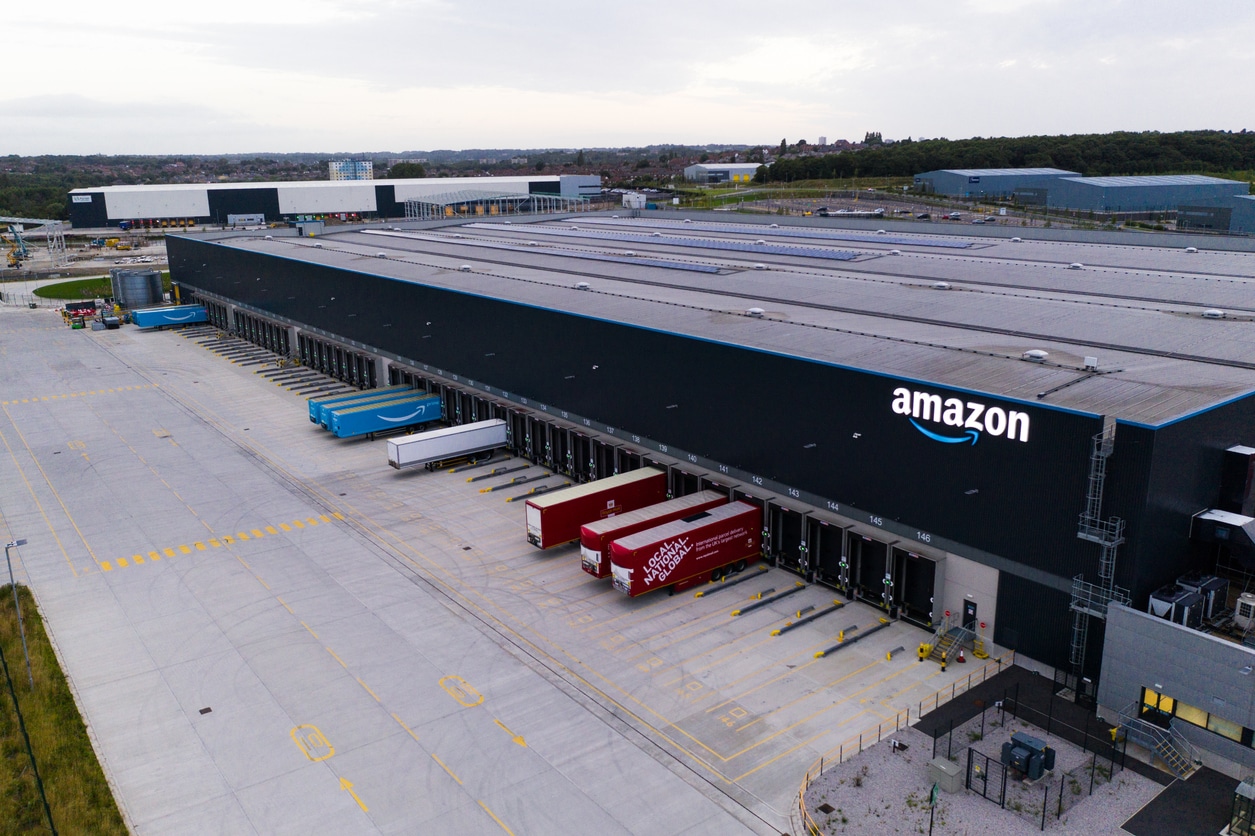Amazon Global Logistics: How to Get Your Shipments Into Amazon FBA Faster

This article contains affiliate links that will allow us to earn commissions without any extra cost to you. Read our full disclosure here.
Amazon has doubled its logistics network throughout the pandemic. Since its breakup with FedEx a couple of years ago, the ecommerce giant has grown its logistics network to over 400,000 drivers, 40,000 delivery trucks, and a fleet of 70 cargo planes. As of 2021 Q3, Amazon is shipping 72% of its own packages and has even started to fulfill online orders made through other marketplaces.
In this article, we’ll discuss how you can move your inventory efficiently through its proprietary Amazon Global Logistics service.
Related Listening: E330: Focusing on Logistics to Increase Profitability
What Is Amazon Global Logistics?
Amazon Global Logistics (AGL) is Amazon’s proprietary freight service. It lets you import directly from your supplier in China to different Amazon marketplaces without having to work with a third-party logistics service provider.
Traditionally, if you’re importing from Asia, you will have to work with service providers to move your inventory from one touch point to another up until it gets checked into an Amazon warehouse. On paper, Amazon Global Logistics reduces the number of touch points in your supply chain, which normally include third-party freight forwarders and 3PLs, in order to minimize your lead time and get your inventory checked in much faster.
Marketplace sellers can sign up to AGL and order a shipment all within Seller Central, and it is currently available to sellers shipping inventory into the US, UK, EU, and Japan. As of writing, AGL offers standard ocean, fast ocean, and air freight as its main services.
Amazon Global Logistics was launched way back in 2018, but it has recently had a renaissance largely because of the pandemic, skyrocketing sea freight costs (roughly $10,000 per 40’ container as of writing), and the longer production times due to major supply chain disruptions.
Related Reading: All About International Ocean Sea Freight and Step-by-Step Instructions
What Are the Pros and Cons of Amazon Global Logistics?
Like all other Amazon programs, Amazon Global Logistics has its fair share of pros and cons. Below are the biggest benefits and drawbacks to using AGL.
Amazon Global Logistics Pros
- Ship directly into an optimal destination Amazon warehouse
- Better shipment tracking
- Your shipments get cleared into stock much quicker than with a third-party service provider
- Reduces touchpoints and lead time in your supply chain
- Seller Central serves as a one-stop shop to sign up and order shipments
Amazon Global Logistics Cons
- Amazon gains more data on your supply chain
- More reliance on Amazon
- High costs (tends to be 20-30% more expensive than most freight forwarding services)
- Not ideal for products with special logistics/handling requirements
As discussed in our piece about the Top 10 Problems Amazon Sellers Deal With, Amazon Global Logistics has two key advantages: First, you have the ability to ship your goods not just directly into an Amazon FBA center, but to an optimal destination warehouse (Amazon lets you know to which warehouse you’ll want to ship when creating a shipment), basically letting you leverage Amazon’s power to get a shorter shipment route during peak seasons; Secondly, your shipments get cleared into stock quicker than they would through a third-party freight service provider. Some sellers observed much faster lead times by roughly two weeks compared to standard ocean freight.
Another huge benefit to using AGL is convenience. Signing up, ordering and tracking shipments can be done all within Seller Central, and payment will be taken out of your Amazon account as well. This is a huge selling point for more sophisticated sellers with huge order volumes or multiple brands, and also for newer sellers who prefer a much simpler process.
As for its cons, AGL tends to be significantly more expensive (roughly 20-30%) than most freight forwarding services out there. That being said, some sellers have observed that the quotes have improved over time, as more marketplace sellers have opted into the service.
Its drawbacks also include handing over information about your supplier, products, and supply chain to Amazon, which has historically used this seller information to give itself a leg up over competing third-party sellers on the marketplace. There is a growing concern among marketplace sellers about ceding more control over nodes in your supply to Amazon, which allows it to gather more data at every point in the chain.

Should I Use Amazon Global Logistics?
Amazon Global Logistics is not for everybody. According to some big marketplaces sellers, it is most ideal for those who are moving a lot of oversized items, as AGL lets you ship these huge items directly into their FCs—using Amazon Global Logistics is an essential part of implementing our Cockroach Method for finding the most profitable products to sell on Amazon. This is also great when you are using the floor-loaded container option, letting you maximize the volume of the entire container.
On the flip side, AGL is much tricker for those who sell in the grocery niche, products that have a relatively short shelf life or refrigerated ones, and other products that will require specialty fulfillment and handling.
Additionally, the convenience offered by Amazon Global Logistics could make it a go-to choice for relatively inexperienced sellers who have little experience working with freight forwarding service providers. If you’re an experienced seller who has a great relationship with a third-party service provider and already knows the ropes of freight forwarding, you may save a lot more dollars without using AGL.
How Do I Enroll Into Amazon Global Logistics?
The steps to signing up and making your first shipment using AGL are outlined in Amazon’s onboarding guide. Although historically, the service is reserved for Chinese sellers, our Importing Course takes a deep dive into how Western sellers can get enrolled and start leveraging this Amazon service.

If you’re already an Amazon FBA seller, you can go ahead and create an Amazon Global Logistics profile within Seller Central. Next, you’ll go through the onboarding process by choosing a payment method, setting up your importer of record (IOR) and customs bond, and uploading the required documents.
When done and when you’ve received approvals for your IOR, you’re ready to create your first shipment using AGL. Simply use the usual Send/Replenish inventory option and make sure that you toggle Yes, I want to ship freight with Amazon. From here, you can proceed to your shipping plan.
Final Thoughts
The global supply chain is yet to fully recover from the major disruptions over the past two years. Amazon Global Logistics could make sense for your business, if you aim to speed up your supply chain process and be able to replenish (and sell) your inventory much quicker. That said, there is much concern about giving Amazon more access to your products and suppliers, and some view AGL as another step towards Amazon’s global domination.
What are your thoughts on Amazon Global Logistics? Let us know in the comments below.






Hi everyone,
the two problems I find in using AGL are the following:
1) The entire container must be shipped to Amazon, which has much higher storage costs than a traditional 3PL.
2)Amazon accepts that many pieces of an ASIN, especially if the product is new? If I buy, for example, 2000 or 3000 pieces from China, Amazon must agree to stock them all.
Hi everyone,
my concern is that if I order a whole container from China, I have to ship it completely to Amazon warehouses with the following problems:
1) Very very high storage costs
2) Does Amazon accept all quantities if the product is new or is there a limit per ASIN?
Hi Justeen,
Great article! My thought on AGL is that it would be this most cost effective method for oversized products if I can floor load the containers. Right now I floor load containers and then have my 3PL palletize them before sending them to an Amazon oversized warehouse. You mentioned floor loaded containers in this article. Therefore, I was wondering if you know (or have heard of others) sending floor loaded containers directly to Amazon’s oversized warehouses without palletizing them first? Thanks for the article and keep up the good work!
Sincerely,
Shane
“First, you have the ability to ship your goods not just directly into an Amazon FBA center, but to an optimal destination warehouse (Amazon lets you know to which warehouse you’ll want to ship when creating a shipment)”
Is this true or am I missing something? I believe Amazon picks the FC and you get no say in choosing which destination FC to go to no?
As a seller, you can specify the destination warehouse for your shipments when using Amazon Global Logistics. However, keep in mind that your shipment’s final destination may depend on various factors, including the availability of the warehouse, shipping routes, and cost.
Hi There,
In addition, we understand that Amazon will only deduct the shipping costs once the goods are fully received into their warehouses. – great cash flow bonus!